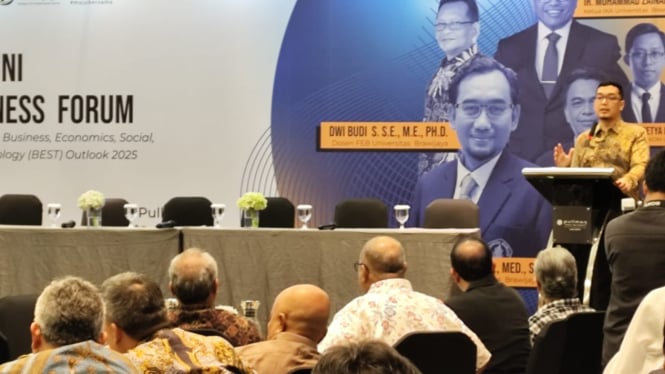Jakarta VIVA – Indonesia is currently at a crucial crossroad in achieving the ambitious vision of ‘Indonesia Emas 2045‘. The new government under the leadership of Prabowo Subianto & Gibran Rakabuming Raka aims to push economic growth to 8% per year.
Professor Widodo, the Rector of Brawijaya University Malang, stated that there are significant challenges ahead. The reality shows that Indonesia’s economic growth in 2023 only reached 5.05%, far from the target.
“Economic disparities between regions are still significant, especially between Java and outside Java. Indonesia’s competitiveness lags behind neighboring countries such as Singapore and Thailand, reflecting the urgent need for economic transformation,” said Widodo in his statement on Monday, December 2, 2024.
He continued, stating that these challenges are becoming more complex with various structural issues hindering growth. Early deindustrialization is one of the main issues faced by Indonesia.
“Since 2011, the contribution of the manufacturing sector to GDP has been declining, weakening the potential for economic growth,” he said.
Four main industrial provinces – East Java, West Java, Central Java, and Banten – have experienced a slowdown since early 2024.
“A study by Brawijaya University in East Java identifies four main challenges: high labor costs, expensive raw materials, difficulty in accessing auxiliary materials, and tax policies that are not supportive,” he said.
He added that without a solution, this deindustrialization could further worsen the national economic conditions. Slowdown in household consumption and investment also adds pressure.
“On the other hand, investment is also sluggish, adding to the economic burden. The government is trying to sustain growth through public spending, which has increased since 2018, especially in response to the COVID-19 pandemic and election preparations. However, in 2024 and 2025, fiscal limitations pose a major challenge.”
Meningkatnya pembayaran utang dan stagnasi penerimaan pajak memperparah tekanan fiskal, sehingga kemampuan pemerintah untuk mempertahankan pengeluaran produktif terancam menurun. Rasio pajak terhadap PDB turun menjadi 10,2% pada 2023 setelah sempat naik ke 10,4% pada 2022. Stagnasi penerimaan pajak dan beban pembayaran bunga utang yang tinggi menjadi hambatan utama yang mengurangi ruang fiskal dan dapat menghambat pertumbuhan ekonomi. Digitalisasi dianggap sebagai solusi potensial untuk mendorong pertumbuhan ekonomi dengan nilai ekonomi digital Indonesia diperkirakan mencapai $90 miliar pada 2024. Namun, reformasi birokrasi yang mendalam juga diperlukan untuk mendukung pertumbuhan berkelanjutan, bersama dengan penguatan sumber daya manusia melalui akses pendidikan berkualitas. Melalui BEST Outlook 2025, berbagai strategi akan dibahas untuk memperkuat daya saing nasional, mendorong pertumbuhan inklusif, dan mengoptimalkan potensi ekonomi digital guna membawa Indonesia ke masa depan yang lebih cerah.










